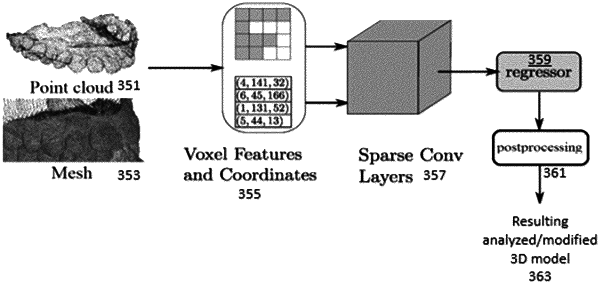| CPC A61C 9/0053 (2013.01) [A61C 13/34 (2013.01); G06T 7/143 (2017.01); G06T 17/20 (2013.01); G06T 2207/30036 (2013.01); G06T 2210/41 (2013.01)] | 11 Claims |

|
1. A method of segmenting a three-dimensional (3D) model of a patient's dentition, the method comprising:
receiving, in a computing device, the 3D model of the patient's dentition;
converting the 3D model of the patient's dentition into a sparse voxel representation comprising voxels having features mapped from the 3D model of the patient's dentition; and
convolving the sparse voxel representation to segment the 3D model of the patient's dentition using a convolutional neural network to form a segmented 3D model of the patient's dentition.
|